Results 4,381 to 4,390 of 12096
Thread: Anandtech News
-
10-07-14, 12:00 PM #4381
Anandtech: AMD Radeon R9 290 Series Prices Finally Begin To Fall
With the launch of NVIDIA’s Maxwell-powered GeForce GTX 900 series last month, it was immediately obvious that NVIDIA had been able to deal a swift blow to AMD’s product lineup by surpassing AMD’s performance while significantly undercutting their pricing. At the time we were expecting AMD to quickly respond with the necessary price cuts to keep the R9 290 series competitive with the GTX 900 series, but surprisingly even a week later this had yet to happen.
Now a bit over two and a half weeks after the GTX 900 series launch, we’re finally seeing Radeon R9 290 series pricing fall in response to NVIDIA’s launch. AMD has not announced an official price cut at this time – and admittedly neither AMD nor NVIDIA tend to announce reactive price cuts – so it’s not clear whether this is AMD’s doing, board partner’s, retailers, or most likely all three. But regardless, retail video card prices at Newegg and other etailers have seen some substantial drops that help bring back at least some balance between AMD and NVIDIA’s high end video card lineups.
A number of Radeon R9 290 cards can now be found for around $300 after rebate, with a couple more factory overclocked models at $310. With HIS, Sapphire, PowerColor, Asus, and XFX represented, this is a broad selection of vendors with a bit less than half of Newegg’s stock now at or around $300. Meanwhile R9 290X can be found for $399, again with a wide selection of vendors and roughly half of Newegg’s stock at or near that price. The remainder of Newegg’s stock in turn generally consists of heavily overclocked or otherwise premium cards that carried their own price premium before these latest cuts.
Speaking of AMD card prices, it should also be noted that AMD’s Never Settle Forever bundle is still active even after this round of price cuts. AMD and their partners will be continuing to try to influence the value proposition of their products by including free games.
For AMD these price cuts don’t come a moment too soon, and while they are going to help the competitive landscape I’m not convinced this is the last time we’re going to see AMD cut prices. As we discussed in our review of the GTX 970, comparing stock-to-stock, the $329 GTX 970 is every bit as fast as the now $400 R9 290X. If AMD wants to be price/performance competitive with NVIDIA then there’s still an additional $70 price difference between the two cards, a gap further muddied by AMD’s game bundle and NVIDIA’s superior energy efficiency. Strictly speaking $400 may not be low enough for the R9 290X, but no doubt AMD wants to see what sales are like at $400 before cutting prices on their single-GPU flagship any further.
The R9 290 on the other hand is in an interesting spot. At resolutions below 2160p it trails the GTX 970 by around 10%, but then again at $300 it’s also priced about 10% lower. Since it ships at a lower clockspeed than R9 290X a lot of AMD’s partners also goose the core clock on R9 290, which improves performance a bit but isn’t enough to close that 10% gap. What it does mean however is that at least so long as energy efficiency is not a concern, R9 290 is appropriately priced for its performance. However if energy efficiency is a concern, then AMD doesn’t have any kind of counter to GM204 at this time.
If anything the one wildcard at this point is the availability of the new GeForce cards. Despite stock more-or-less holding up immediately post launch, we’ve seen both the GTX 980 and GTX 970 go out of stock in the last week. As of the time of this writing it looks like Newegg has received their Tuesday shipment, so there is stock available, but it’s a thin selection of just a few different cards (including a model or two at MSRP). For prospective buyers this means either playing inventory games or grabbing the AMD alternative, and for AMD this is all the more reason not to cut prices too drastically while GeForce availability is still limited. As for NVIDIA it’s been a while since we’ve seen them capacity constrained on the high end, so while it’s solid evidence that they’ve done everything right with the GTX 900 series launch, it does mean that they’re also going to be leaving sales on the table until supply and demand level out.
Fall 2014 GPU Pricing Comparison AMD Price NVIDIA Radeon R9 295X2 $1000 $550 GeForce GTX 980 Radeon R9 290X $400 $330 GeForce GTX 970 Radeon R9 290 $300 Radeon R9 280X
Radeon R9 285$250 Radeon R9 280 $200 GeForce GTX 760
More...
-
10-08-14, 08:30 AM #4382
Anandtech: MSI GT72 Dominator Pro: Performance Preview
NVIDIA just launched their new GTX 980M/GTX 970M GPUs, and unfortunately we were unable to get a notebook in time for testing… which just changed a few hours ago. With an MSI GT72 Dominator Pro in hand, we're ready to see just how fast the GTX 980M is when it comes to playing games. Here's a hint: the 1080p display may prove to be the limiting factor in quite a few titles.
More...
-
10-08-14, 02:32 PM #4383
Anandtech: The AnandTech Guide to Video Card Overclocking Software
Video card overclocking has become a very popular topic amongst gamers and PC enthusiasts these days. With the release of next generation games around the corner and the growing popularity of resolutions beyond 1080p, overclocking is becoming increasingly important to users looking to squeeze the most performance possible out of their video cards. It’s been more than a decade since video card overclocking was first introduced, and while the core concept remains the same, the software has improved to make it easier and provide additional features and functionality. If you're looking to boost performance on your GPU, we're rounding up the most popular utilities to find out their pros and cons. Read on for the full guide of GPU overclocking software.
More...
-
10-08-14, 04:30 PM #4384
Anandtech: HTC Announces the Desire EYE
Today at their Double Exposure event in New York, HTC has announced the Desire EYE. The major feature on the Desire EYE is its 13MP front facing camera which should hopefully take some of the best selfies of any smartphone. The internals are also an interesting story. While devices sporting HTC's Desire branding are typically more budget oriented devices, the Desire EYE packs significantly more powerful hardware than other Desire device. It has a 5.2" 1080p IPS display, and Qualcomm's Snapdragon 801. BoomSound continues to be present with two TFA9887 speaker amps. The full list of specifications has been laid out below.
HTC Desire EYE SoC MSM8974ABv3 2.26 GHz Snapdragon 801 RAM/NAND 2 GB LPDDR3, 16GB NAND + microSDXC Display 5.2” 1920x1080 IPS LCD Network 2G / 3G / 4G LTE (Qualcomm MDM9x25 UE Category 4 LTE) Dimensions 151.7 x 73.8 x 8.5 mm, 154 grams Camera 13MP rear camera, 1.12 µm pixels, 1/3.06" CMOS size (Sony IMX214), F/2.0, 28mm (35mm equiv) lens.
13MP front camera, 1.12 µm pixels, 1/3.06" CMOS size (Sony IMX214), F/2.2, 22mm (35mm equiv) lens.Battery 2400 mAh (9.12 Whr) OS Android KitKat with HTC Sense 6 Connectivity 802.11a/b/g/n + BT 4.0, USB2.0, GPS/GNSS, DLNA, NFC SIM Size NanoSIM Owing to its 5.2" display, the Desire Eye has a larger height and width than HTC's M8 and E8 phones. At 8.5mm it's 1.35mm thinner than both of them, and at 154 grams its mass sits between the lighter E8 and heavier M8. Also similar to the E8 and M8 is its hardware platform which includes Qualcomm's MSM8974AB at 2.26GHz, 2GB of LPDDR3 RAM. The finish on all color variants is matte plastic throughout, and the two-tone "Doubleshot" finish really makes for an even better design than what we saw in the E8. The power button has also been moved to the side, and we see a new two-stage camera button. The latter is definitely useful, but the pressure needed to trigger the second stage is a bit too high in my experience.The Desire EYE also sports water resistance, rated for immersion in 1 meter of water for up to 30 minutes. HTC has gone the extra mile here by implementing water resistance without annoying plastic flaps that are easily torn off. Instead, we see rubber gaskets around key areas and "short protection" on the USB port. 802.11ac isn't present, and the battery is on the small side, but overall the Desire EYE has solid specifications.Like I mentioned in the beginning, the major marketing and selling point for the phone is definitely the front facing camera. The Desire EYE uses the same Sony IMX214 sensor for the front and rear cameras. IMX214 is formidable as a sensor for rear cameras, and this is the first time we're seeing it also implemented as a front-facing camera. By using two separate cameras instead of a rotating upper section like on the Oppo N1, HTC has been able to customize the cameras for their intended use case. The rear camera has a wider F/2.0 aperture and a longer 28mm focal length than the front-facing camera. The front-facing camera is optimised for a wider 87 degree field of view with its shorter 22mm focal length. Both cameras have a max ISO of 3200 and a max exposure time of 1/9s. In some casual testing it seems that there is a bit of color noise in low light, but it's otherwise well-suppressed. Detail is definitely good but there're noticeable sharpening kernels at the base settings which is a bit disappointing. The rear camera seems to have detail similar to the Butterfly 2, which is comparable to most 13MP cameras in flagships today.HTC is including a number of software features that add additional camera functionality, collectively called the HTC EYE Experience. HTC's face tracking keeps the user's face in focus and crops the image to frame it. Up to four people can be tracked and framed at the same time. HTC's Split Capture feature combines simultaneously taken photos or videos with the front and back cameras into a single image or video. Voice Selfie allows the front camera to take a photo by smiling, and to take a video by saying "action" or "rolling"HTC is also bringing over features that were introduced earlier this year with the Desire 820. Face fusion allows the user to merge their face with that of their friend or another person. Live makeup allows the user to adjust the level of skin smoothing with a live preview before capture.Some of the HTC EYE Experience features will roll out to the following HTC devices in the coming months:- HTC One (M7)
- HTC One (M8)
- HTC One E8
- HTC One Mini
- HTC One Mini 2
- HTC One max
- HTC Desire 816
- HTC Desire 820
- HTC Butterfly 2
HTC plans to roll out the Desire EYE on carriers in Europe, the Middle East, Africa, Asia, and the United States from October onward. Pricing is said to be around that of the One (E8), and should supersede the One (E8) in those markets.
More...
- HTC One (M7)
-
10-08-14, 04:30 PM #4385
Anandtech: HTC Announces RE, an Action Camera: Hands On
Today is HTC's camera-centric Double Exposure event in New York. In addition to announcing the new Desire EYE, HTC is announcing a new device that occupies it's own space in HTC's portfolio. It's a small camera called the RE. As far as cameras go, the RE is fairly unique. At first glance it looks like it could be something like a flashlight, but the large glass circle is really the cover for a 16MP camera housed inside. The device is shaped so it can be held and operated with a single hand. At 65.5 grams it's also very light. MicroSD is used exclusively for storage, with an 8GB card shipping by default and support for up to 128GB MicroSDXC. An 820 mAh (3.116Wh) battery provides up to 1200 captured photos or 100 minutes of continuous video recording.
The RE is the opposite of what HTC has done with their cameras in the smartphone space. HTC is also keen to emphasize that this doesn't compete with GoPros. They were one of the first companies to start putting manual controls for white balance, ISO, and shutter speed in their camera application. With the RE, HTC is trying to create a highly automatic photography experience where all that's required is the press of a button. To do this, HTC has eliminated as many buttons, toggles, and controls as possible. The RE has no on/off button. Instead, it has a sensor in the grip which detects when it is being held and turns the camera on which uses an MCU which is likely to be a Cortex M solution. The only buttons are the shutter button on the back where the user's thumb is placed, and a slow-mo video toggle on the front underneath the lens where the user's index finger is placed. There are no dials, and no viewfinder or LCD.
Composition is an essential part of photography. To allow users to take photos without any viewfinder, HTC has used a 16MP 1/2.3" CMOS sensor with an F/2.8 aperture and a very wide 146 degree field of view which is equivalent to 17mm. The camera's wide field of view means that as long as users have a rough idea of what is being captured by the camera and point in the direction of the subject, they can crop and align photos after they are taken without cutting off any essential details. In practice, the quality is passable, although hurt by the wide field of view which reduces peak resolution in addition to the half second or so of shutter lag. The gallery below has sample photos from the RE, although HTC cautioned that both the hardware and software were non-final and that there may be significant differences in the final product.
HTC has also announced a line of accessories for the RE, which are pictures above. The extended battery has a novel design, screwing into to the 1/4" tripod mount on the bottom of the RE and using a retractable micro USB plug. While the camera has an IP57 rating for dust resistance and immersion in 1 meter of water for 30 minutes, accessories like the extended battery do not. Users who plan on going deeper underwater should invest in the protection pack which includes a cap that improves water resistance to IP58 which allows for immersion in 3 meters of water for up to 2 hours.
While the camera can function on its own, it also integrates with Android and iOS devices that support Bluetooth 4.0 LE. The RE app that will be launching with the camera will work as a photo and video manager, and a live viewfinder. Photos can be easily shared with social networks, and automatically backed up to Dropbox or Google Drive.
HTC plans to launch the RE in the United States by October, and will expand to other regions afterward. We expect pricing in the US to be around 199 USD at launch. While it remains to be seen whether the RE is the first of many new action cameras, HTC seems to be exploring new product categories instead of following prevailing industry trends.
More...
-
10-08-14, 06:30 PM #4386
Anandtech: AMD Appoints Dr. Lisa Su as President & CEO, Rory Read Steps Down
As part of AMD’s broader restructuring efforts, back in June the company announced a business reorganization that would see the company organized into two major groups, the Computing and Graphics Business Group, and the Enterprise, Embedded and Semi-Custom Business Group. Furthermore at the time AMD promoted Dr. Lisa Su to the position of Chief Operating Officer (COO), a position that previously had been unfilled at AMD for some time.
Now 4 months later it turns out that Lisa’s time as COO will be a short one. Today AMD has announced that effective immediately, current CEO Rory Read will be stepping down. In his place Lisa is being promoted to President and CEO of the company, making her the 5th CEO in the company’s history.
With Lisa’s previous promotion to COO, she had essentially already been promoted to AMD’s second-in-command under Rory, so this is a straightforward promotion over at AMD. More significantly, given the resurrection of the COO post there has been good reason to suspect that Lisa was bound for a promotion to CEO sooner than later. And now that AMD has finally promoted Lisa to CEO, they are confirming that the above was exactly the plan, and that Rory has been preparing her for the CEO role for some time.
For his part, the retirement of Rory signifies that AMD’s transition is nearly complete and that his role is coming to an end. Rory was brought on in 2011 to restructure and stabilize the company after its struggles late in the last decade and at the start of this one, with an emphasis on diversifying the company beyond its traditional (and troubled) x86 and graphics products. While AMD remains significantly vested in those products, they now have a sizable business presence in other fields/technologies such as ARM processors and semi-custom IP designs, which as part of AMD and Rory’s plans ensure the company isn’t overexposed to any single business. And on the financial side AMD is unfortunately still operating at a loss, but if all goes according to plan that should be coming to an end this year.
Though AMD has never called Rory a transitional CEO, his actions overhauling AMD over the last 3 years and now stepping down as CEO after the fact serve to cement the fact that Rory was brought on board to execute the necessary restructuring rather than to lead the company in the long term. AMD is still in the process of developing some of the silicon that will be the basis of these business plans – including the x86 and ARM versions of the K12 processor – so it will be a bit longer yet until the company can fully execute on their ambidextrous plans, but on the business and development side they have completed the necessary changes to allow that. With those changes behind them AMD is now ready to move out of their transitional phase and in to their new position as a diversified IP designer, which is what has led to Rory’s retirement and Lisa’s promotion.
Internally for AMD and its product lineups, Lisa’s promotion should not result in significant changes. She has already been overseeing much of AMD throughout her career there – first as SVP of Global Business Units and then as COO – meaning that although the CEO is changing, the person overseeing much of AMD’s product lineup is not. Working alongside AMD’s CTO, Mark Papermaster, AMD’s product leadership is more or less unchanged.
Meanwhile the transition from Rory to Lisa means that AMD is also once again being led by an engineer (and a very capable one at that), which AMD leadership is treating as a great strength going forward. Lisa holds a doctorate in electrical engineering from MIT and has previously held positions at IBM and Texas Instruments, including semiconductor research and development, and is much of the reason she joined the company at the SVP level in 2012. Being the CEO is about business as much as it is about technology, but with AMD’s business situation settled by Rory, this should give Lisa a chance to settle in and focus on driving and improving AMD’s technological situation, which is ultimately what will make or break the company. AMD now has a number of very capable engineers leading the company at multiple levels, including Lisa, CTO Mark Papermaster, and K12 designer Jim Keller, so the company should be in a good position going forward.
Finally, this promotion means that AMD’s executive lineup has been slightly shuffled once more. The COO position was recreated for Lisa and now it seems just for Lisa; it will not be filled now that she is CEO, and those responsibilities will be staying with her. Meanwhile AMD is also noting that while Rory is stepping down as CEO effective immediately, he will be staying with the company in an advisory role to help see out the company through the rest of 2014.
More...
-
10-09-14, 06:22 AM #4387
Anandtech: GIGABYTE BRIX GB-BXi7-4500 Review: Intel Core i7 in a UCFF PC
Over the last couple of years, the ultra-compact form factor (UCFF) has emerged as one of the bright spots in the troubled PC marker. Intel kickstarted the category with their Sandy Bridge NUC kits in early 2013. Recognizing the popularity of this segment, other vendors also began to promote similar products. GIGABYTE targets this market segment with an extensive lineup of products under the BRIX brand. Late last year, GIGABYTE sent us their high-end vanilla BRIX, the GB-BXi7-4500. Unlike Intel's Haswell NUCs (with a i5-based SKU at the top end), this BRIX brings a Haswell i7 ULV processor into the UCFF market. Read on to find out what an i7 CPU can deliver in this form factor.
More...
-
10-09-14, 06:22 AM #4388
Anandtech: ECS Unveils Z97I-Drone: More Mini-ITX for Haswell
Our recent review of $140 Z97 mini-ITX boards left us wanting more. There is plenty of potential in the mini-ITX form factor even at the low end price points, so when we saw ECS’ planned Z97I-Drone at Computex this year it looked like it would provide an interesting look into the platform. Today the motherboard is unveiled, and should be heading to market shortly.
ECS’ design feature of late has centered on the ‘L33T Gaming’ branding, which means giving each of their motherboards names indicative of various gaming concepts. ‘Machine’ and ‘Domination’ have been used previously in conjunction with the ‘Gank’ name for Intel’s mainstream chipsets, whereas ‘Aggro’ is reserved for future AMD motherboards. ‘Drone’ makes a lot of sense in this context, although it was used on an ATX Z87 motherboard previously.
ECS is keen to promote the Gaming USB port, supporting a report rate of 1000 Hz, along with their ‘Hybrid Power’ which incorporates a digital power design. In terms of features we get five SATA 6 Gbps ports, an Intel I218-V network solution, an M.2 slot for WiFi/Bluetooth only, ALC1150 based audio, six USB 3.0 ports, two fan headers and ECS’ upgraded BIOS package.
The board puts the socket in the bottom right corner, up against the DRAM and PCIe slot meaning that large backplates or DRAM might interfere with large CPU cooling solutions. Similar to GIGABYTE, ECS is expanding the area around the screw holes to double the radius so errant screwdrivers do not start taking off capacitors when the board is being fitted into a case. The five SATA 6 Gbps ports are all in a row at the top, which unfortunately means the cable at the top is blocked in when locking cables are used.
The 24-pin ATX connector is well placed at the edge of the motherboard, although the 8-pin for the CPU is awkwardly placed just to the left of center, meaning any form of cable management goes out of the window. Also the two fan headers are in this area, surrounded by the SATA cables and the CPU power cable, making it difficult to organize.
The rear IO uses a block of four USB 2.0 ports (which I like), with video connectivity provided by a DVI-D, HDMI and DisplayPort. Four USB 3.0 ports, an Intel I218-V network port and audio jacks from the Realtek ALC1150 round it off.
One of the interesting elements here is the M.2 WiFi-only solution, where users will have to source their own M.2 card. Storage is disabled here, presumably in firmware, but also due to the lack of space on the motherboard. So far I have only seen M.2 WiFi on some GIGABYTE X99 models, using Intel’s 7260-AC solution. But the lack of a card here means that the ECS Drone should be around or below the $140 mark. We are awaiting full pricing details from ECS and we should be getting the board in for review as well, so stay tuned for that.
Gallery: ECS Unveils Z97I-Drone: More Mini-ITX for Haswell2-01_thumb.jpg)
2-02_thumb.jpg)



More...
-
10-09-14, 07:03 AM #4389
Anandtech: ASRock Releases X99 Extreme11: So I Heard You Like Storage
We reviewed the X79 Extreme11 back in September 2012. The concept was simple: divert eight PCIe lanes into an LSI SAS chip for eight more SATA ports with SAS compatibility. Then ASRock released the Z87 Extreme11 which combined the LSI chip with a port multiplier, upping the total from 8+6 to 16+6. The X79 required two PLX8747 chips to also enable x16/x16/x16/x16 + LSI, whereas the Z87 only used one PLX8747 for x8/x8/x8/x8 + LSI.
Now insert the X99 version of the Extreme11. It gets a bit tricky here, because SATA is not the only storage around. Add into the mix that the chipset supports 10 SATA ports on its own then there is the potential for something silly, or awesome, or perhaps a little of both. The X99 Extreme11 uses the same LSI SAS 3008 without the port multiplier, but add in the 10 chipset ports X99 already provides and it gives a total of 18. This LSI chip uses eight PCIe 3.0 lanes and supports RAID 0/1 only, but still allows ASRock to publish 6.1 Gbps peak read/write when top end SATA drives are connected to each port.
The X99 Extreme11, similar to the Z87, uses two PLX chips to achieve x16/x16/x16/x16 support along with the LSI chip. To throw some more into the mix, the motherboard also has two Ultra M.2 slots, with both supporting PCIe 3.0 x4 connectivity and 22x110 sized drives. These M.2 x4 slots are still good for 2.8 Gbps according to ASRock, and while they won’t be RAID capable in hardware, a software layer might provide an interesting project.
The motherboard will support Xeons with either UDIMMs or RDIMMs, along with ECC support. Networking is provided by two Intel NICs, the I218-V and I211-AT, with support for Teaming. The PCIe slots will support x16/x16/x16/x16 even with the 28-lane i7-5820K, although using that CPU will disable the second M.2 x4 due to the lack of bandwidth.
ASRock is keen to promote their 12-phase power design, which we see paired with large heatsinks. A heatpipe connects all three heatsinks, with the heatsink on the left there only to provide extra surface area. The chipset heatsink is also dealing with the LSI controller, hence the size and the active cooling. Users in the past often express concern about small fans like this, although it can be disconnected if the user has their own sufficient cooling.
The board has eight USB 3.0 ports, six from the chipset and two from an ASMedia controller powering two of the rear IO ports. Also onboard is a COM header, seven fan headers (only two are 4-pin), Realtek ALC1150 audio in Purity Sound 2 and a dual BIOS topology. Because of the use of 4-way PCIe, there are two connectors on board for additional VGA power, although these are molex connectors which I disapprove of. One of them is to the left of the middle of the board, making cable management a nightmare.
The Rear IO has two eSATA ports, both of which are shared with specific SATA ports on the motherboard, meaning only one can work at one time. The back panel also has a PS/2 combination connector, four USB 2.0 ports, four USB 3.0 ports, the two Intel network ports and audio.
In ASRock’s YouTube video promoting the motherboard, they paired the system with an 18-core E5-2699 v3, 128GB of DRAM, four GTX 780 Ti cards, two M.2 x4 drives and 18 SSDs. See you later, I need to sell a kidney and perhaps a lung as well.
I would not be surprised if the X99 Extreme11 ends up being the most expensive X99 motherboard on the market. The two PLX 8747 chips, as well as the LSI 3008, are not cheap for the end-user. Though if a user wants to wire up a large Xeon, a ton of memory, four GPUs, a dozen or more storage devices or any combination therein, then the price of the motherboard might be quite low down on the list. The X79 Extreme11 retailed for $600, so I suspect that this motherboard will be in the same ballpark.
I have requested a review sample, and hopefully we can delve into the interesting PCIe arrangement under the hood. It will be interesting to see how everything is wired up. A full specification list can be found on ASRock's X99 Extreme11 page.
Gallery: ASRock Releases X99 Extreme11: So I Heard You Like Storage

_thumb.jpg)


 (2)_thumb.jpg)
More...
-
10-09-14, 01:03 PM #4390
Anandtech: HTC Silently Adds HTC One (M8 EYE) To Chinese Store
At HTC's Double Exposure event in New York we saw the launch of the Desire EYE, a smartphone with a serious focus on the camera. HTC has silently put a listing for the HTC One (M8 EYE) on their chinese web store. The HTC One (M8 EYE) is essentially the same as the HTC One (M8) that launched earlier this year, but with one major hardware difference. HTC's 4MP UltraPixel sensor has been replaced by Sony's IMX214, the same sensor used on the HTC Butterfly 2 and the HTC Desire EYE. Unlike the Desire EYE, the front-facing camera is still a 5MP sensor.
Based on the photos on the website, the HTC One (M8 EYE) also has the new HTC EYE Experience features like Face Fusion, HTC Split Capture, and advanced face tracking features for conferencing.
The fact that this is a fairly silent launch from HTC seems to suggest that this may be a device destined only for the Chinese market.
More...
Thread Information
Users Browsing this Thread
There are currently 15 users browsing this thread. (0 members and 15 guests)




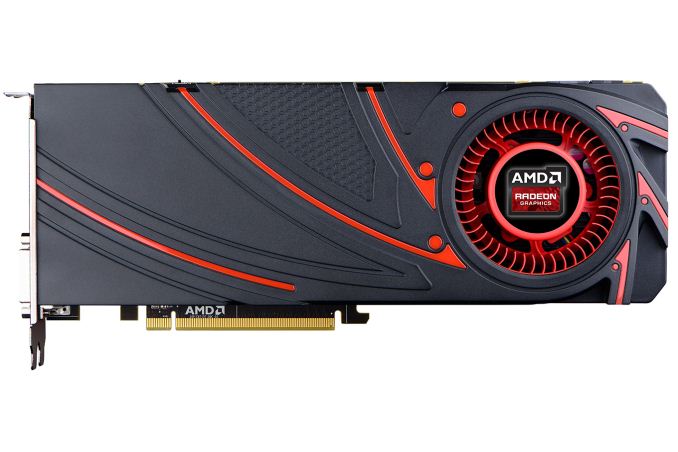
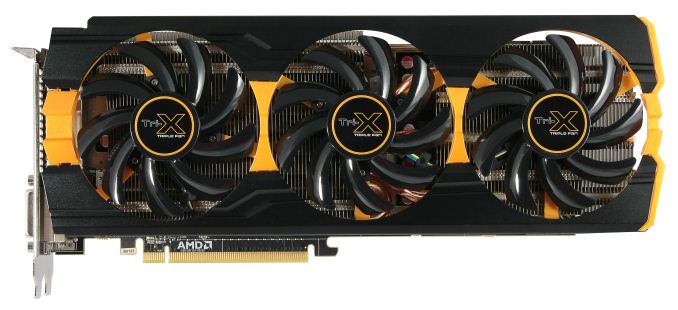
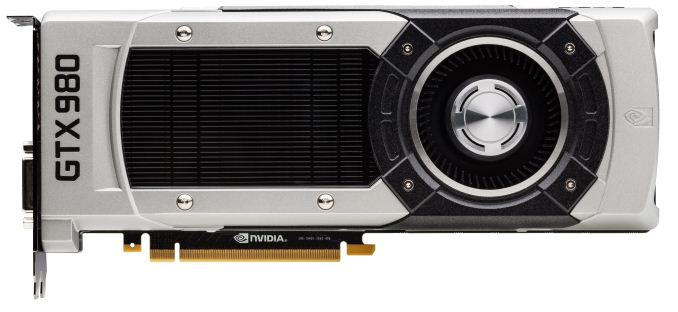

 Quote
Quote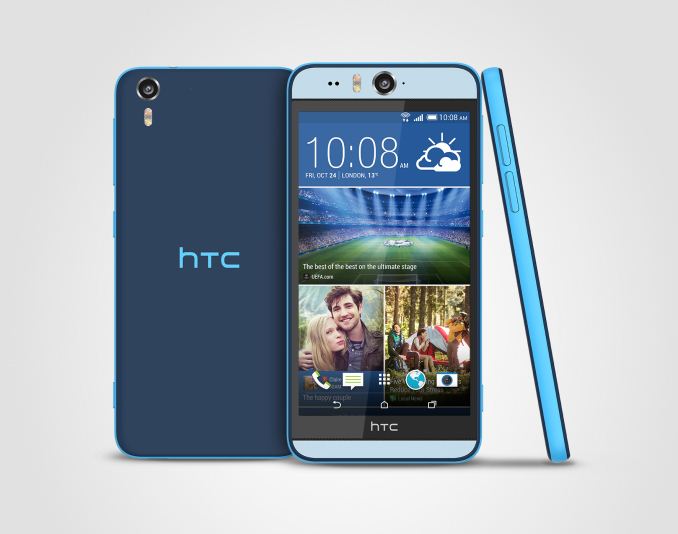

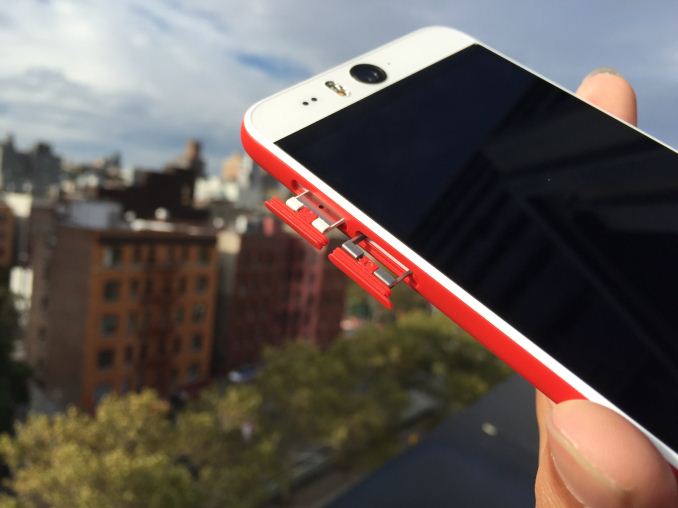
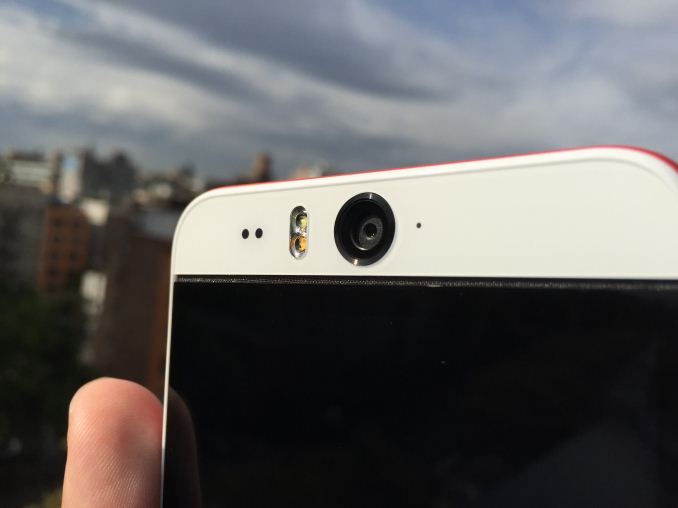
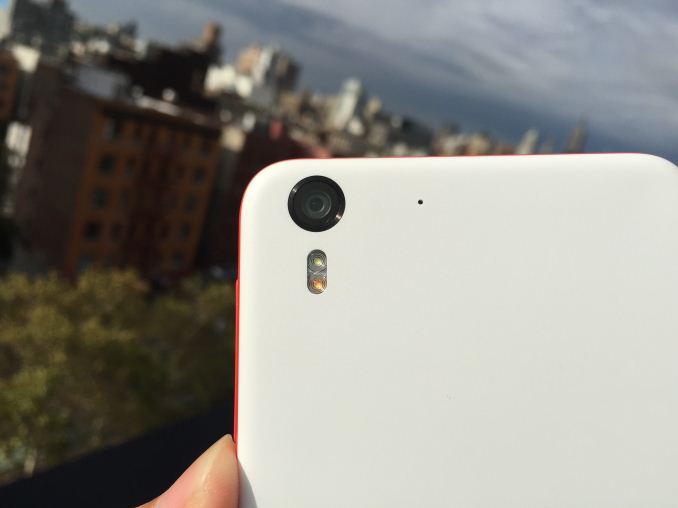
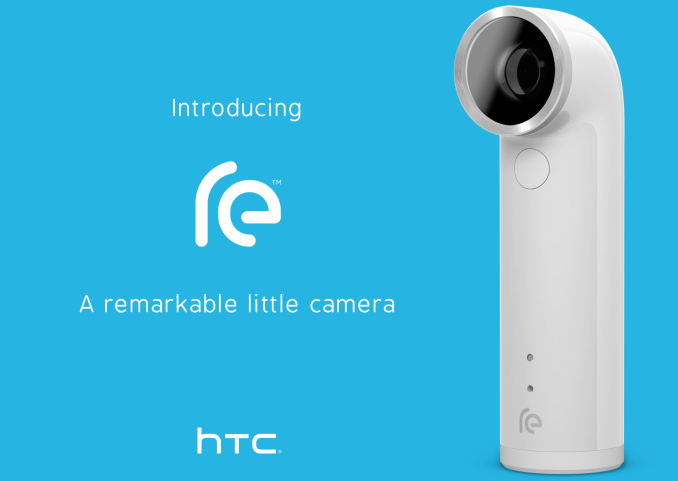












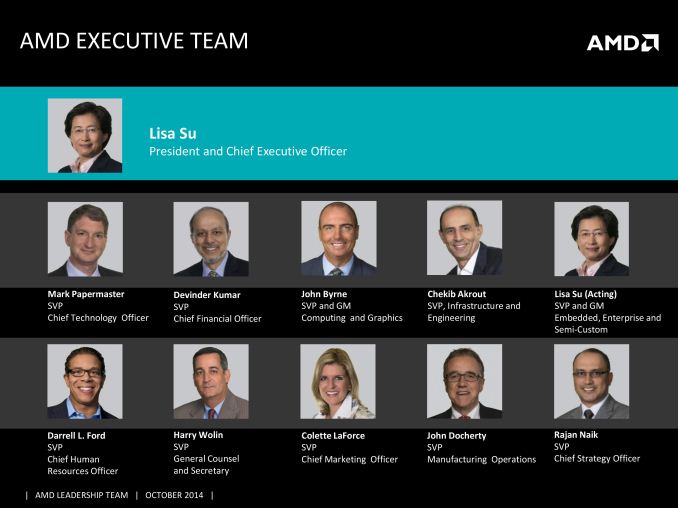





 (2)_575px.jpg)
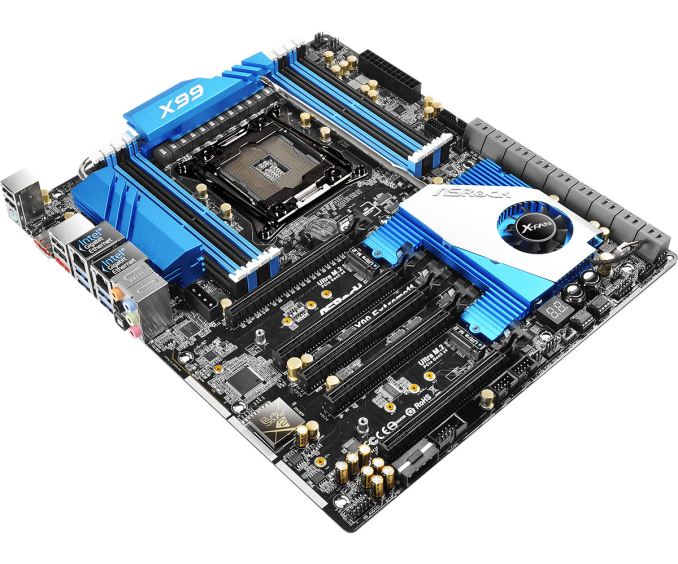
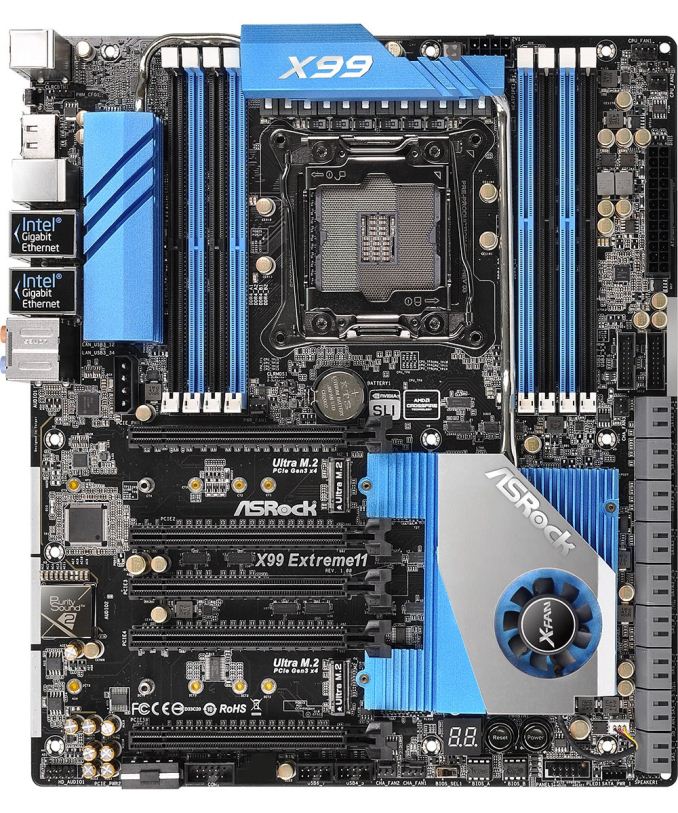


















Bookmarks